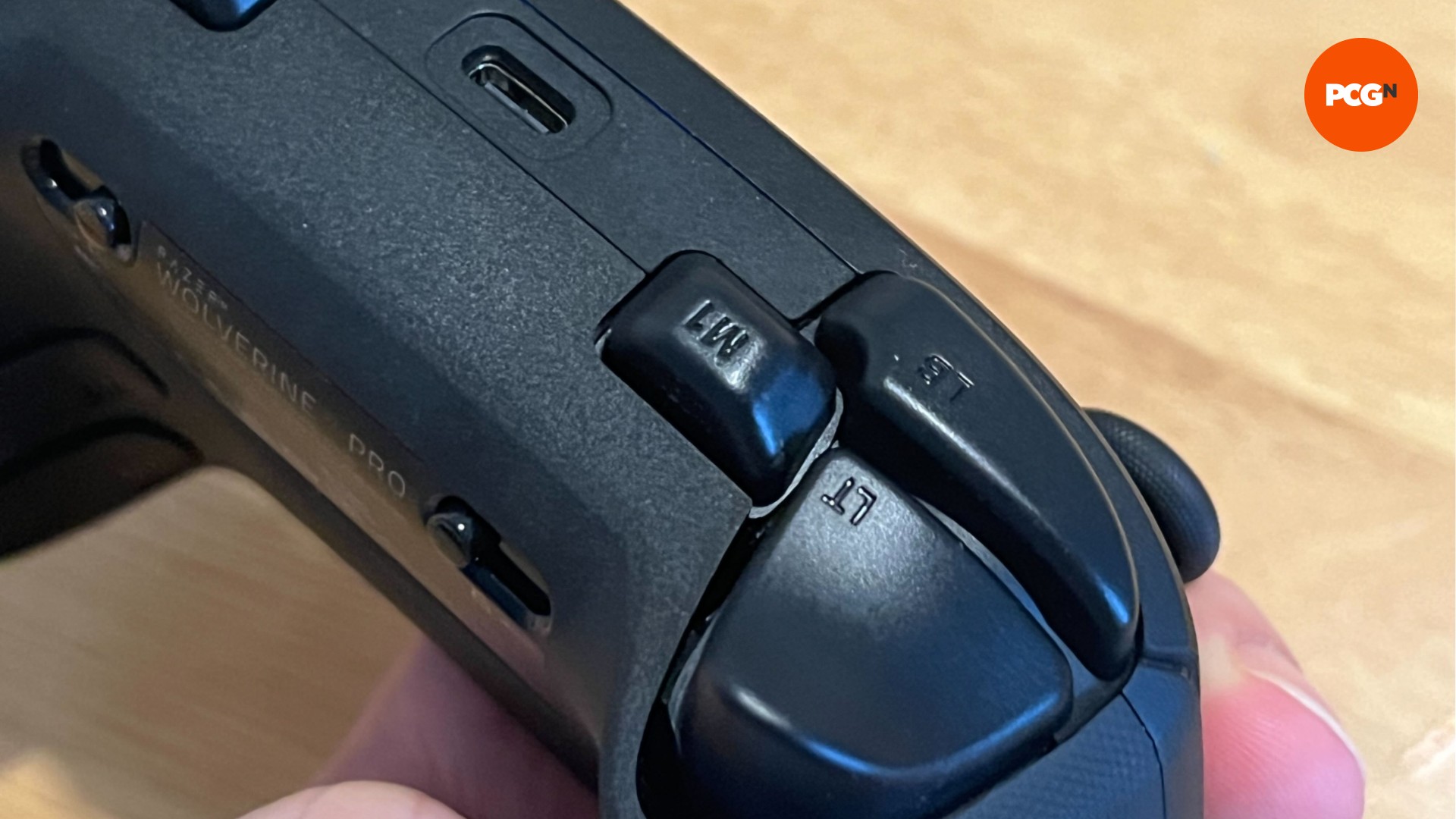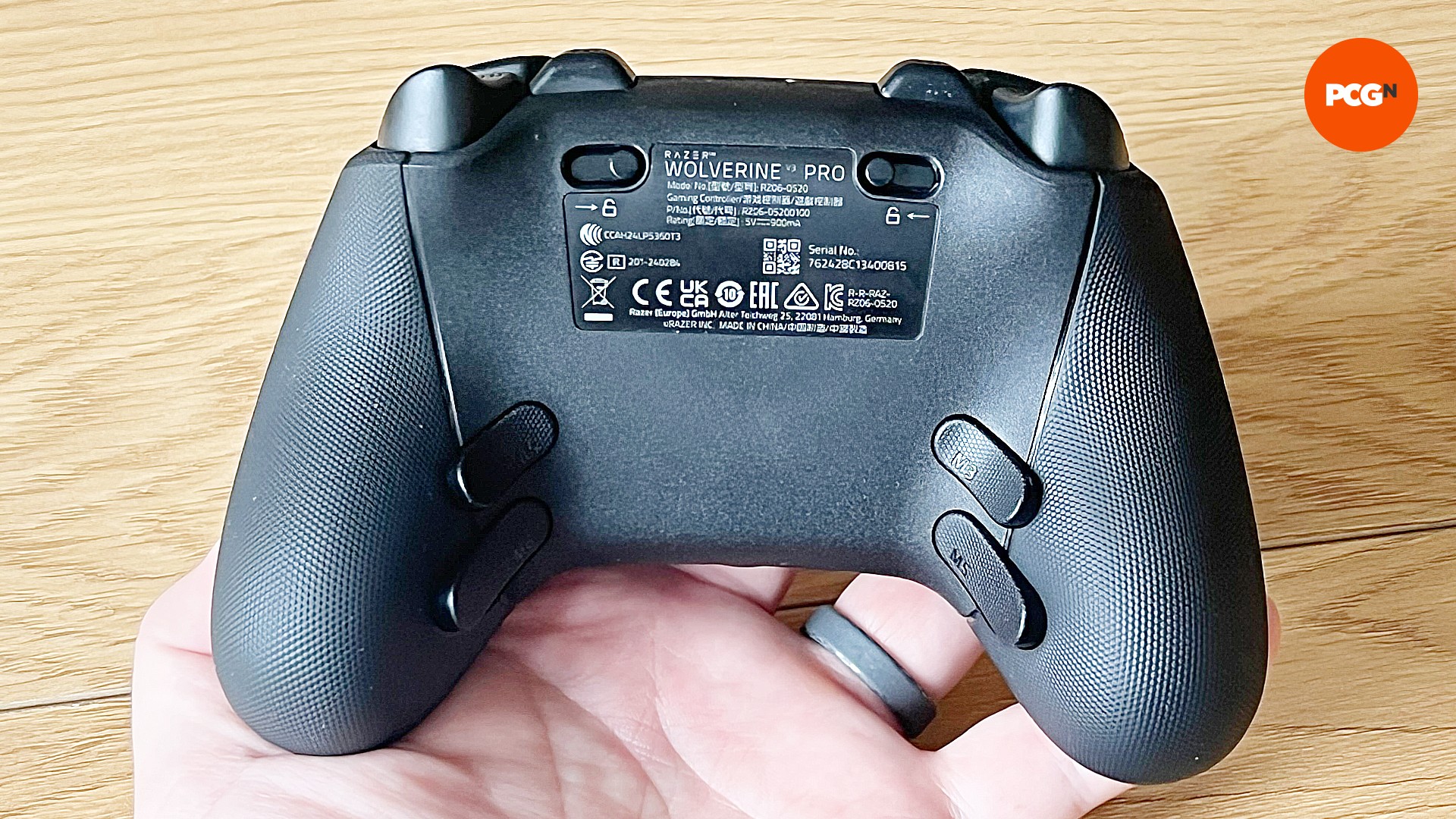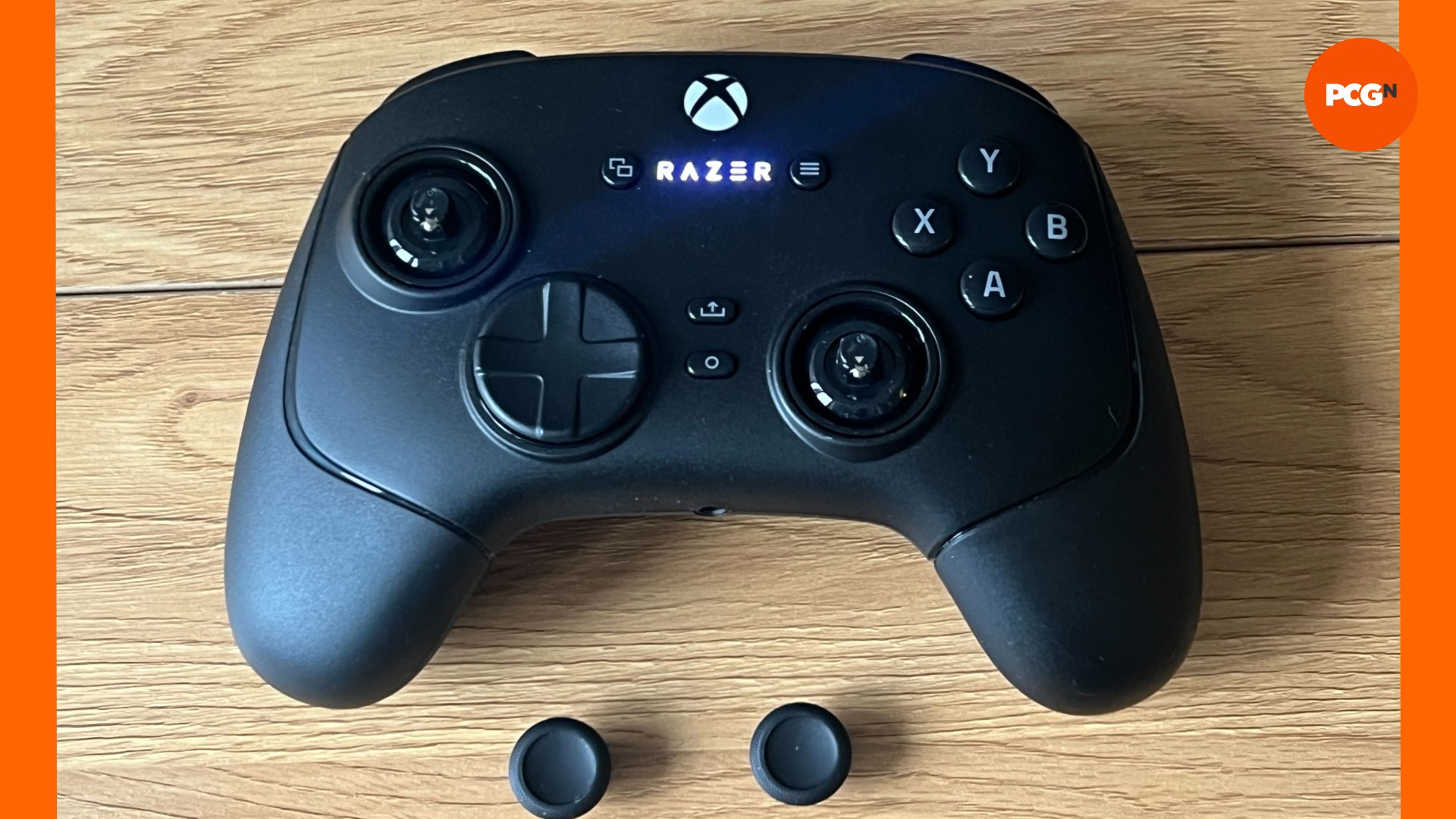Our Verdict
The Razer Wolverine V3 Pro doesn’t do enough to separate itself from other elite controllers at face value. Still, careful consideration of professional play has resulted in a very responsive controller with accurate, customizable controls and stick-drift-resistant Hall Effect thumbsticks, making its $199.99 price tag a little easier to swallow.
- Reliable Hyperspeed wireless connection
- Wired 1,000Hz polling rate
- General responsiveness is fantastic
- Mecha-tactile action buttons
- Back paddle positioning feels natural
- High price
- Battery life on the low side
- No option to buy without a case and thumbsticks to reduce the price
The Razer Wolverine V3 Pro is a fantastic Elite-style controller for Xbox and PC, focusing on responsiveness and comfort in hand. Designed in collaboration with 24-time Halo champion Eric “Snip3down” Wrona, this new Wolverine is touted as genuine professional-grade gear, and it’s hard to argue with the results.
I find the Razer Wolverine V3 Pro to be one of the best PC controllers on the market right now, and despite its eye-watering price, there’s plenty of value on display to justify the cost. The look and feel of the controller are great, and the natural positioning of its back paddles immediately won me over, but should you ditch your standard gamepad in favor of this pricey pro alternative?
Specs
| Razer Wolverine V3 Pro | |
| Connection | Razer Hyperspeed 2.4GHz, Wired |
| Power | Rechargable battery |
| Platforms | PC & Xbox |
| Layout | Xbox |
Features
The Razer Wolverine V3 Pro is a wireless Xbox and PC controller capable of up to 1,000Hz polling when wired. Razer takes lessons learned by making a variety of competitive gaming mice and applies the learnings to the Wolverine V3 Pro. This results in a super slick design, detailed customization options, and super responsive performance.
The Wolverine V3 Pro has Hall Effect joysticks and Mecha-Tacticle switches in its ABXY face buttons, along with an eight-way D-pad. Dual-mode triggers can also adopt a short mouse-click style activation alongside a standard long pull activation that feels much smoother. The four rear paddles are textured for improved grip, plus the shoulder-mounted M1 and M2 buttons don’t protrude so much that they ruin the look of the controller, but can still be located easily without having to look down.
There’s no hiding the influences of gaming mice on the Wolverine V3 Pro, but it’s certainly not a bad thing because Razer is known for making some of the best gaming mice and this experience has transferred over flawlessly. This decision to boldly introduce mouse-like fell and features give players the feeling of complete control and a rapid responsiveness.
As a wireless controller, the Razer Wolverine V3 Pro also comes with a rechargeable battery, advertised as offering “about 20 hours” of play, although this is under rather strict conditions. The gamepad also comes with a protective fabric carry case, a set of alternative thumbsticks, a 10ft USB A to C charging cable, and the hyperspeed wireless dongle. All those extras add considerably to the value of a premium controller like this but a more barebones version without any of these that saves you $20-$50 would probably tempt a lot of buyers.

Design
The design of Razer’s Wolverine V3 Pro can be assessed on two fronts. At face value, the V3 Pro looks like just another premium Xbox controller, which isn’t necessarily a negative, but in describing it as such, you have an immediate expectation that comes to mind. It’s an asymmetrical ABXY layout with an Xbox logo, view, menu, and share buttons, as well as a D-pad. On top of this, you have the four rear paddles and additional two top-mounted inputs.
When looking at the Wolverine V3 Pro on a much deeper level, and after having held it in my hands for countless hours during testing, I’m filled with praise for every aspect of its design and layout. First, consideration is given to both claw and standard grips, which are accommodated using well-positioned rear paddles and top-mounted M1 and M2 inputs.
These are nothing new, and I don’t want to try and make out as such, but so few controllers utilize both styles so well. The M1 and M2 inputs are carefully positioned next to the LB/LT and RB/RT buttons so that they never interfere if you’re adopting a standard grip, but if you are a claw-style player, they’re effortless to reach without needing to stretch and risk messing up your flow.
As for the paddles, they are situated a lot lower on the handles, meaning they sit more naturally in your two middle fingers. Thankfully, they aren’t so sensitive that you’ll be constantly setting them off, a problem I have found with many alternatives dating back to the original Elite controller. Add in two trigger locks positioned on the rear of the controller, and it all adds up to create what is my favorite and most comfortable controller experience to date.

Performance
I put the Wolverine V3 Pro through its paces in Madden 25, Forza Motorsport 8, and Call of Duty: Warzone to get a feel for how these games felt both with out-of-the-box settings and after some time spent customizing inputs via the Razer software on PC.
The performance of the Wolverine V3 Pro is at its best when you tinker with settings to accommodate the style of game you’re playing, as I did for my entire time testing the controller. When playing a game like Madden, I tweaked the thumbstick sensitivity to be varied, with the left stick being more sensitive while the right stick was less so. This helped make my directional inputs far snappier while allowing me to reduce the risk of mistakes with the right stick such as a poorly timed juke with my running back.
In Forza, it’s similar to the stick sensitivity situation, but in racing games, back paddles become the MVP for me. Assigning my gear shifts to these inputs allows me to maintain full control of a vehicle and keep my thumbs steady as they control the car and my camera view.
Finally, in Warzone and other shooters, the thumbstick dead zones are at their most sensitive because any delay in aiming can be the difference between life and death (in the game). While your reaction times also play a major role, if you can remove the added milliseconds of needing your controller to hit its active zone and respond, it’s a big advantage. Also, I like the controller haptics turned up to 11, or in this case, six, as I want to be able to feel every movement and shot to fully immerse myself in firefights. The circular thumbstick profile also comes in useful here as it smooths out the omnidirectional movements rather than sticking to the clunkier feel of an eight-direction system.
Throughout all my testing, I felt in complete control of how the Wolverine V3 Pro performs, and it did everything I asked of it without any issue. It’s this level of customization that creates the professional feel, and the layout of the Razer Controller app is far from intimidating, even if I was initially confused as to why the controller didn’t just use Synapse like all other Razer PC accessories.
At all times, the Wolverine V3 Pro felt responsive, but when switching over to wired mode and enabling the 1,000Hz polling, I admittedly expected more but was left underwhelmed. Having tested countless mice and seeing the difference that a jump between 1,000Hz and 4,000Hz can make, I was excited to see how the Wolverine V3 Pro might fare reporting in at four times its 250Hz wireless rate. The difference in gameplay felt marginal with only the thumbstick responsiveness seeming to benefit, and while it’s still a step forward for controllers, I wouldn’t let it scare you away from carrying on with wireless play for now.
On its battery life, the Wolverine V3 Pro can go for over 20 hours of constant use, but only if you turn off the Chroma RGB and reduce the haptic feedback to zero. Otherwise, the typical battery life, from a full charge, will sit in the 10-15 hour range, depending on what settings you are using. That’s a touch on the low side, with the likes of the Xbox Elite controller boasting up to 40 hours of battery life, though it’s still long enough for a safe several day of gaming between charges.
Going from flat to full charge took just shy of three hours when left alone, but the wired play means you don’t have to worry about having enough juice to play, provided you have a spare USB port to charge while you play.

Verdict
All in all, the Razer Wolverine V3 Pro delivers superfast wired responsiveness and a comfortable feel that works well for standard and claw grips. The build quality is fantastic, as you should expect given the price tag, but overall the Wolverine V3 Pro does very little to innovate in the controller market.
Instead, the V3 Pro is the perfect marriage of multiple premium features, all brought together in the ideal shell for PC and Xbox gamers. It’s hard to justify the cost when a cheaper, wired version is available for half the price – particularly if you’re solely a PC player. However, if you take your gaming seriously, the expansive customization offers a fine-tuned experience that could genuinely offer you an edge over the competition.
Price
The Razer Wolverine V3 Pro has an MSRP of $199.99 (£199.99) and is available from the Razer store and retailers such as Amazon, from August 28, 2024. There’s no sugarcoating the price. It’s expensive even compared to other premium controllers such as the Scuf Instinct and Xbox Elite Series 2.
It’s certainly towards the very limit of what I would be willing to pay for a controller personally, but the value of the package as a whole is boosted by the inclusion of all those extras in the box and the presence of Hall Effect thumbsticks, which the above competitors lack.
Alternatives
Big Big Won Rainbow Pro 2
The Rainbow Pro 2 is a genuine alternative to the Wolverine V3 Pro, especially when it costs a fraction of the price. I will concede that the Wolverine feels better in hand, and the customization options eclipse that of the Rainbow Pro 2, but if budget is a major factor in your decision, and you can handle the rather garish design, it’s a viable option to consider.
